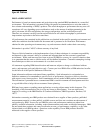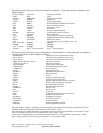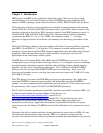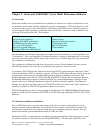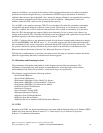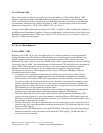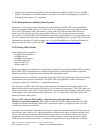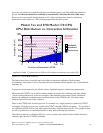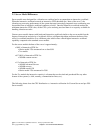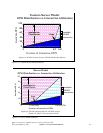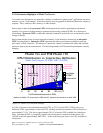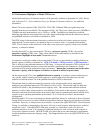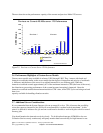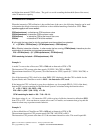
y The new server algorithm only applies to the new hardware available in V4R5 (2xx, 8xx and SBx
models). The behavior of all other hardware, such as the 7xx models is unchanged (see section 2.2.3
Existing Model section for 7xx algorithm).
2.2.2 Choosing Between Similarly Rated Systems
Sometimes it is necessary to choose between two systems that have similar CPW values but different
processor megahertz (MHz) values or L2 cache sizes. If your applications tend to be compute intensive
such as Java, WebSphere, EJBs, and Domino, you may want to go with the faster MHz processors
because you will generally get faster response times. However, if your response times are already
sub-second, it is not likely that you will notice the response time improvements. If your applications tend
to be L2 cache friendly such as many traditional commercial applications are, you may want to choose the
system that has the larger L2 cache. In either case, you can use the IBM eServer Workload Estimator to
help you select the correct system (see URL: http://
www.ibm.com/iseries/support/estimator ) .
2.2.3 Existing Older Models
Server model behavior applies to:
y AS/400 Advanced Servers
y AS/400e servers
y AS/400e custom servers
y AS/400e model 150
y iSeries model 170
y iSeries model 7xx
Relative performance measurements are derived from commercial processing workload (CPW) on iSeries
and AS/400. CPW is representative of commercial applications, particularly those that do significant
database processing in conjunction with journaling and commitment control.
Traditional (non-server) AS/400 system models had a single CPW value which represented the maximum
workload that can be applied to that model. This CPW value was applicable to either an interactive
workload, a client/server workload, or a combination of the two.
Now there are two CPW values. The larger value represents the maximum workload the model could
support if the workload were entirely client/server (i.e. no interactive components). This CPW value is for
the processor feature of the system. The smaller CPW value represents the maximum workload the model
could support if the workload were entirely interactive. For 7xx models this is the CPW value for the
interactive feature of the system.
The two CPW values are NOT additive - interactive processing will reduce the system's
client/server processing capability. When 100% of client/server CPW is being used, there is no CPU
available for interactive workloads. When 100% of interactive capacity is being used, there is no CPU
available for client/server workloads.
For model 170s announced in 9/98 and all subsequent systems, the published interactive CPW represents
the point (the "knee of the curve") where the interactive utilization may cause increased overhead on the
system. (As will be discussed later, this threshold point (or knee) is at a different value for previously
announced server models). Up to the knee the server/batch capacity is equal to the processor capacity
(CPW) minus the interactive workload. As interactive requirements grow beyond the knee, overhead
IBM i 6.1 Performance Capabilities Reference - January/April/October 2008
© Copyright IBM Corp. 2008 Chapter 2 - Server Performance Behavior 18



